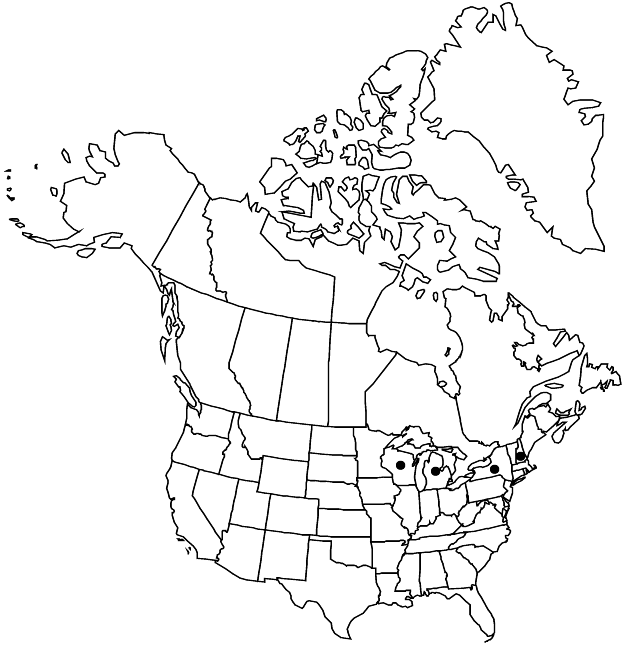Difference between revisions of "Dianthus carthusianorum"
Sp. Pl. 1: 409. 1753.
FNA>Volume Importer |
FNA>Volume Importer |
||
| Line 24: | Line 24: | ||
|elevation=200-400 m | |elevation=200-400 m | ||
|distribution=Mich.;N.H.;N.Y.;Wis.;Europe. | |distribution=Mich.;N.H.;N.Y.;Wis.;Europe. | ||
| − | |discussion=<p>Dianthus carthusianorum is an extremely variable species; at least 12 subspecies and 35 varieties have been described. A comprehensive study is warranted to determine how many of those taxa should be recognized or whether, as proposed by T. G. Tutin and S. M. Walters (1993), the variation in many of these characters is indeed continuous.</p><!-- | + | |discussion=<p><i>Dianthus carthusianorum</i> is an extremely variable species; at least 12 subspecies and 35 varieties have been described. A comprehensive study is warranted to determine how many of those taxa should be recognized or whether, as proposed by T. G. Tutin and S. M. Walters (1993), the variation in many of these characters is indeed continuous.</p><!-- |
| − | --><p>The New Hampshire collections of Dianthus carthusianorum were made between 1914 and 1926 in Coos County (R. K. Rabeler and R. E. Gereau 1984); all other observations and collections are post-1975. Dianthus carthusianorum is sometimes cultivated and may escape.</p> | + | --><p>The New Hampshire collections of <i>Dianthus carthusianorum</i> were made between 1914 and 1926 in Coos County (R. K. Rabeler and R. E. Gereau 1984); all other observations and collections are post-1975. <i>Dianthus carthusianorum</i> is sometimes cultivated and may escape.</p> |
|tables= | |tables= | ||
|references= | |references= | ||
| Line 50: | Line 50: | ||
|publication year=1753 | |publication year=1753 | ||
|special status= | |special status= | ||
| − | |source xml=https://jpend@bitbucket.org/aafc-mbb/fna-data-curation.git/src/ | + | |source xml=https://jpend@bitbucket.org/aafc-mbb/fna-data-curation.git/src/8f726806613d60c220dc4493de13607dd3150896/coarse_grained_fna_xml/V5/V5_327.xml |
|subfamily=Caryophyllaceae subfam. Caryophylloideae | |subfamily=Caryophyllaceae subfam. Caryophylloideae | ||
|genus=Dianthus | |genus=Dianthus | ||
Revision as of 18:38, 18 September 2019
Plants cespitose, not matted. Stems erect, simple or branched proximally, 25–65 cm, glabrous. Leaves: sheath (5–)8–18(–25) mm, 3–8 times as long as stem diam.; blade linear to spatulate, 3–7(–13) cm, green, margins glabrous. Inflorescences dense, 4–15(–20+)-flowered heads; bracts lanceolate, equaling or longer than calyx, herbaceous to scarious, apex aristate; bracteoles 4 or 6, brown, oblong-obovate to oblanceolate, 2/3–3/4 times as long as calyx, scarious, apex aristate in distal 1/3–1/5. Pedicels 0.1–2 mm. Flowers subsessile; calyx 40–45-veined, 10–15 mm, glabrous, lobes ovate, 3–4 mm; petals deep pink to scarlet or purple, bearded, 10–15 mm, apex dentate. Capsules 8–10 mm, slightly shorter than calyx. Seeds 1.6–2 mm. 2n = 30, 60 (both Europe).
Phenology: Flowering summer.
Habitat: Disturbed areas, fields
Elevation: 200-400 m
Distribution

Mich., N.H., N.Y., Wis., Europe.
Discussion
Dianthus carthusianorum is an extremely variable species; at least 12 subspecies and 35 varieties have been described. A comprehensive study is warranted to determine how many of those taxa should be recognized or whether, as proposed by T. G. Tutin and S. M. Walters (1993), the variation in many of these characters is indeed continuous.
The New Hampshire collections of Dianthus carthusianorum were made between 1914 and 1926 in Coos County (R. K. Rabeler and R. E. Gereau 1984); all other observations and collections are post-1975. Dianthus carthusianorum is sometimes cultivated and may escape.
Selected References
None.